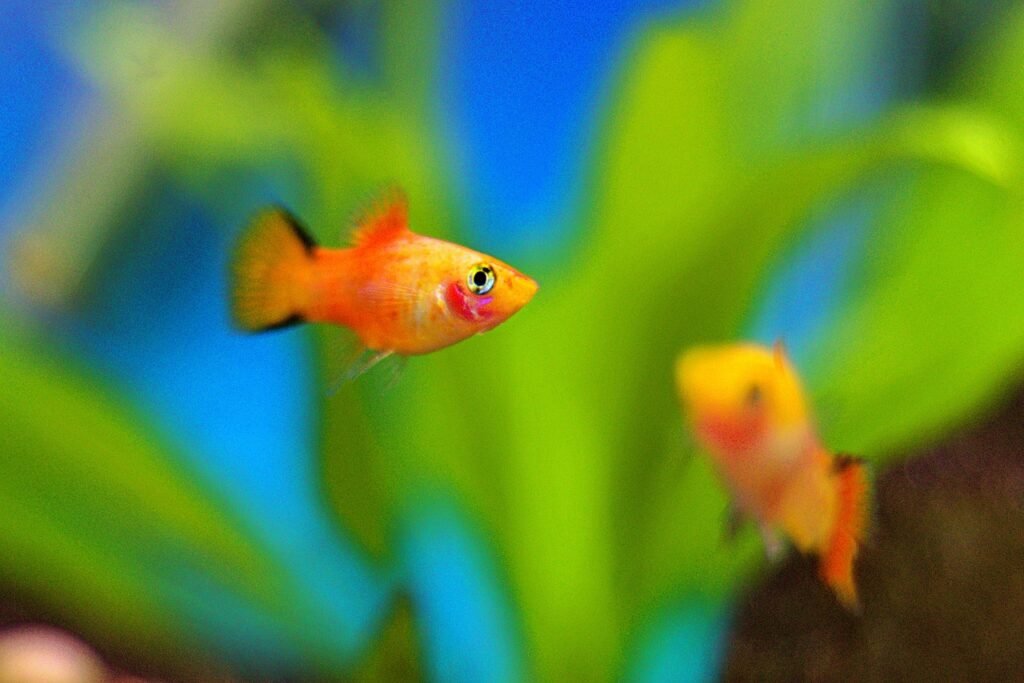The Different Types of Platy Fish: A Comprehensive Guide
Platy fish, scientifically known as Xiphophorus maculatus, are a favorite among aquarium enthusiasts. These vibrant, hardy, and easy-to-care-for fish are perfect for both novice and experienced hobbyists. In this comprehensive guide, we will delve into the various types of platy fish, their care requirements, and why they make such excellent pets.
Introduction to Platy Fish
Platy fish are small, freshwater fish native to Central America, particularly Mexico, Guatemala, and Honduras. They belong to the family Poeciliidae, which includes other popular aquarium species such as guppies and mollies. Platies are livebearers, meaning they give birth to free-swimming young instead of laying eggs, which can be fascinating to observe in a home aquarium.

Types of Platy Fish
Platy fish come in a wide variety of colors and patterns, making them a vibrant addition to any aquarium. Below, we explore the most popular types of platy fish, each with its unique charm and characteristics.
1. Common Platy (Xiphophorus maculatus)
The common platy is the most widely recognized type. They exhibit a range of colors, including red, yellow, orange, blue, and black. These fish are often a mix of colors, with some displaying striking patterns like spots and stripes. The common platy is known for its peaceful temperament and ease of care.
2. Swordtail Platy (Xiphophorus hellerii x maculatus)
Swordtail platies are a hybrid between the platy and the swordtail fish. They are characterized by their elongated lower tail fin, which resembles a sword. Swordtail platies come in various colors and are slightly larger than the common platy. They are active swimmers and add dynamic movement to the aquarium.
3. Variegated Platy
Variegated platies, also known as marbled platies, are known for their unique, speckled patterns. These fish often have a combination of dark and light colors, creating a marbled effect. Variegated platies are particularly popular for their striking appearance and the visual interest they add to an aquarium.
4. Mickey Mouse Platy
The Mickey Mouse platy gets its name from the distinctive black markings at the base of its tail, which resemble the iconic silhouette of Mickey Mouse’s head and ears. These platies come in various colors, including yellow, red, and blue. The playful pattern makes them a favorite among children and Disney enthusiasts.
5. Tuxedo Platy
Tuxedo platies are named for their formal, tuxedo-like appearance. They typically have a dark body with lighter-colored fins, resembling a classic tuxedo outfit. The contrast in colors gives these fish a sophisticated and elegant look, making them a stylish choice for aquariums.
6. Sunset Platy
Sunset platies are named for their vibrant, sunset-like coloration. They typically have a gradient of colors, starting with a bright yellow or orange at the head and fading into a deep red towards the tail. This stunning coloration makes sunset platies a popular choice for adding a splash of color to any aquarium.
7. Blue Platy
Blue platies are known for their beautiful, iridescent blue coloration. This striking color is relatively rare in platies, making them highly sought after by hobbyists. Blue platies can range from a pale sky blue to a deep, rich blue, and they often have a shimmering quality that adds a touch of elegance to the tank.
8. High Fin Platy
High fin platies are characterized by their elongated dorsal fins, which can be up to twice the height of their bodies. This distinctive feature gives them a unique and dramatic appearance. High fin platies come in various colors and patterns, making them a visually striking addition to any aquarium.
Care Requirements for Platy Fish
Platy fish are renowned for their hardy nature and ease of care. However, providing the right environment and care is essential to keep them healthy and vibrant. Here are the key aspects to consider when caring for platy fish:
1. Tank Setup
- Tank Size: Platies are small, but they are active swimmers and thrive in tanks of at least 10 gallons. Larger tanks are recommended if you plan to keep a community of fish.
- Water Conditions: Platies prefer slightly alkaline water with a pH of 7.0-8.2. The water temperature should be kept between 70-78°F (21-26°C).
- Filtration: A good filtration system is essential to maintain water quality and prevent the buildup of harmful substances. Regular water changes are also important to keep the tank clean.
2. Diet
Platies are omnivores and have a diverse diet. In the wild, they feed on small insects, algae, and plant matter. In an aquarium setting, they should be provided with a varied diet that includes:
- Flake Food: High-quality flake food should be the staple of their diet.
- Frozen or Live Food: Supplement their diet with frozen or live foods such as brine shrimp, bloodworms, and daphnia.
- Vegetables: Blanched vegetables like spinach, zucchini, and peas can also be offered to provide essential nutrients.
3. Behavior and Tank Mates
Platies are peaceful and social fish that get along well with other community fish. They are active swimmers and enjoy exploring their environment. Suitable tank mates for platies include:
- Other livebearers like guppies and mollies.
- Peaceful species like tetras, danios, and corydoras.
- Avoid aggressive or fin-nipping fish that may harm platies.
4. Breeding Platies
Breeding platies is relatively easy, and they often breed without any intervention from the aquarist. Here are some tips for successful breeding:
- Separate Breeding Tank: If you want to breed platies, consider setting up a separate breeding tank to protect the fry from being eaten by adult fish.
- Pregnant Females: Female platies give birth every 4-6 weeks, producing 20-40 fry at a time. Look for a rounded abdomen and a dark gravid spot near the anal fin to identify pregnant females.
- Feeding Fry: Once the fry are born, provide them with finely crushed flake food or specialized fry food. Ensure the tank has plenty of hiding spots for the fry to avoid predation.
Common Health Issues and How to Prevent Them
Platies are generally robust fish, but they can still be susceptible to certain health issues. Understanding these common problems and how to prevent them is crucial for maintaining a healthy aquarium.
1. Ich (White Spot Disease)
Ich is a common parasitic infection that presents as white spots on the fish’s body and fins. It can cause irritation, rubbing, and lethargy.
- Prevention: Maintain good water quality and avoid sudden temperature changes. Quarantine new fish before introducing them to the main tank.
- Treatment: Increase the water temperature gradually to 86°F (30°C) and treat with ich medication as per the manufacturer’s instructions.
2. Fin Rot
Fin rot is a bacterial infection that causes the fins to become ragged and discolored. It is often a result of poor water quality or injury.
- Prevention: Keep the tank clean and perform regular water changes. Avoid overstocking and reduce stress by providing hiding places.
- Treatment: Use antibacterial medication and improve water quality. Isolate affected fish to prevent the spread of infection.
3. Swim Bladder Disorder
Swim bladder disorder affects the fish’s buoyancy, causing them to float at the surface or sink to the bottom.
- Prevention: Avoid overfeeding and provide a balanced diet. Soak dry foods before feeding to prevent them from expanding in the fish’s stomach.
- Treatment: Fast the fish for 24-48 hours and then feed them a cooked, peeled pea to help clear any blockages.
Types of Platy Fish
- High Fin Platy Fish: Breeding, and Health Guide
- Swordtail Platies (Xiphophorus hellerii x maculatus): Types, Care, and Breeding
- Sunset Platies: Care, Habitat, and Breeding
- Blue Platy Fish: Care, Breeding, and Health
Conclusion
Platy fish are a delightful addition to any aquarium, thanks to their vibrant colors, peaceful nature, and ease of care. With a wide variety of types to choose from, each offering unique and beautiful characteristics, there’s a platy for every aquarist’s taste. By providing the proper environment, diet, and care, you can enjoy the beauty and activity of these charming fish for many years to come.
Incorporating platy fish into your aquarium not only enhances its visual appeal but also brings a sense of liveliness and joy. Whether you’re a beginner or a seasoned aquarist, platies are sure to be a rewarding and enjoyable part of your aquatic family.
Discover more from EMMOCEB
Subscribe to get the latest posts sent to your email.






